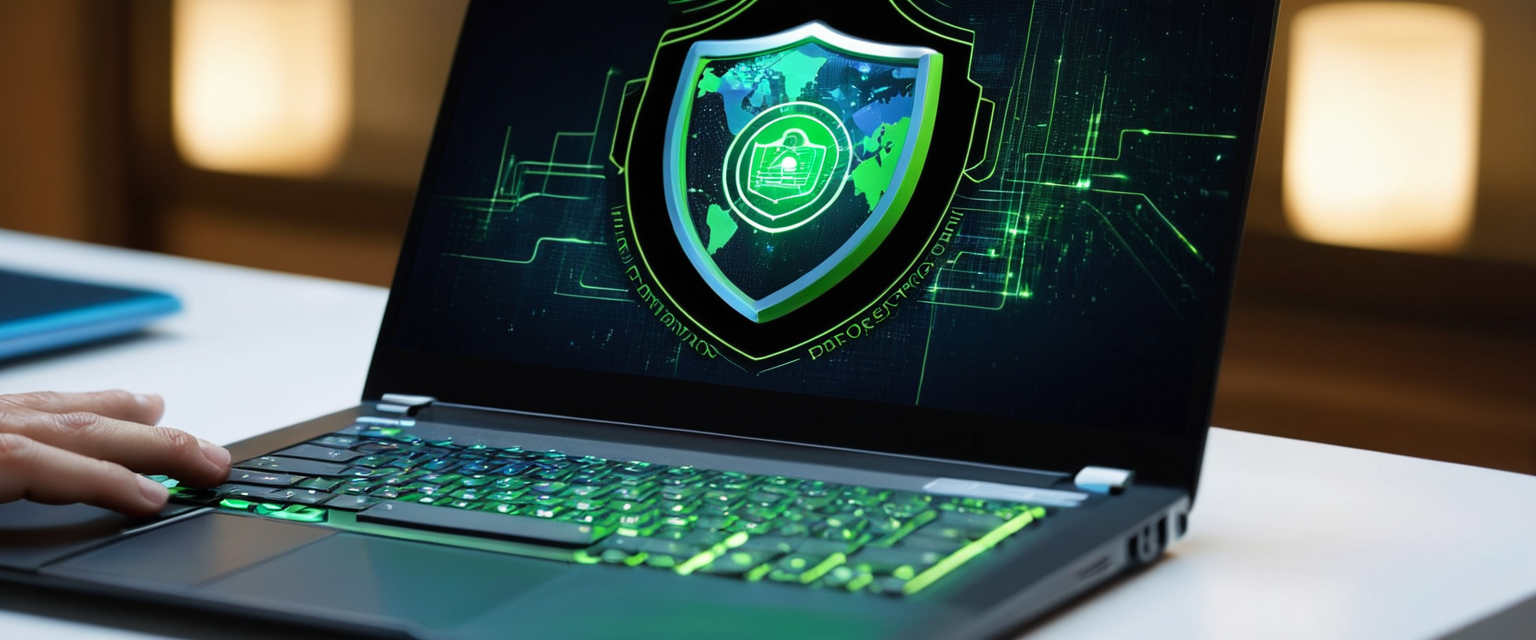
This comprehensive analysis examines the multifaceted approaches to detecting malware on computer systems, encompassing an extensive range of detection methodologies spanning from automated scanning tools to advanced behavioral analysis techniques. The report synthesizes current best practices in identifying various malware types, including ransomware, fileless malware, rootkits, trojans, and spyware, while addressing both preventive measures and remediation strategies. Key findings indicate that effective malware detection requires a multi-layered approach combining signature-based detection, behavioral analysis, heuristic evaluation, and user awareness of warning signs. This guide provides practitioners with comprehensive understanding of detection mechanisms, practical tool recommendations, and actionable strategies for maintaining cybersecurity in an increasingly sophisticated threat landscape where attackers employ advanced obfuscation techniques and polymorphic code modifications to evade traditional security measures.
Understanding the Malware Threat Landscape
The contemporary cybersecurity environment faces an unprecedented proliferation of malicious software variants, each employing sophisticated techniques to evade detection and maintain persistence on compromised systems. Malware refers to any software designed to harm computer systems, steal sensitive data, or enable unauthorized access to computing resources. The diversity of malware types reflects the evolving objectives of threat actors, ranging from financially motivated cybercriminals to sophisticated state-sponsored operations. Understanding this landscape proves essential for anyone seeking to detect and remediate infections before they inflict substantial damage to organizational or personal data.
The malware ecosystem has matured dramatically over recent years, with attackers developing increasingly complex delivery mechanisms and evasion techniques. Ransomware, one of the most destructive malware categories, exemplifies this sophistication by using encryption to disable a target’s access to its data until a ransom is paid. The city of Baltimore experienced this reality firsthand when attacked by RobbinHood ransomware, which halted all city activities including tax collection, property transfers, and government email for weeks, ultimately costing the city more than eighteen million dollars with costs continuing to accrue. Similar attacks against the city of Atlanta in 2018 resulted in costs of seventeen million dollars, demonstrating that ransomware represents a critical threat to both public and private sector organizations.
Another particularly insidious category involves fileless malware, which doesn’t install anything initially but instead makes changes to files that are native to the operating system, such as PowerShell or WMI. Because the operating system recognizes the edited files as legitimate, fileless attacks often evade antivirus software detection entirely, and because these attacks are stealthy, they prove up to ten times more successful than traditional malware attacks. The Astaroth fileless malware campaign exemplified this approach by spamming users with links to .LNK shortcut files that, when downloaded, launched WMIC tools alongside other legitimate Windows tools to download additional code executed only in memory, leaving no evidence detectable by vulnerability scanners before downloading and running a Trojan that stole credentials and uploaded them to a remote server.
Rootkits represent another critical malware category, functioning as software that gives malicious actors remote control of a victim’s computer with full administrative privileges. These sophisticated tools can be injected into applications, kernels, hypervisors, or firmware, spreading through phishing, malicious attachments, malicious downloads, and compromised shared drives while also concealing other malware such as keyloggers. The Zacinlo rootkit exemplifies this sophistication by infecting systems when users download a fake VPN app, conducting a security sweep for competing malware to remove it, then opening invisible browsers that interact with content like humans would by scrolling, highlighting and clicking to fool behavioral analysis software, ultimately generating revenue through advertising click fraud.
Mobile malware has emerged as an increasingly significant threat, with attacks targeting mobile devices rising fifty percent since the previous year. Mobile malware threats encompass diverse categories including Trojans, ransomware, and advertising click fraud, distributed through phishing and malicious downloads, particularly affecting jailbroken phones that lack default protections inherent to those devices’ original operating systems. Triada, a rooting Trojan, was injected into the supply chain when millions of Android devices shipped with the malware pre-installed, gaining access to sensitive areas in the operating system to install spam apps that display ads, sometimes replacing legitimate ads, so that when users clicked unauthorized ads, revenue went to Triada’s developers.
Recognizing Malware Symptoms and Warning Signs
Successfully detecting malware infections often begins with identifying characteristic symptoms that suggest a system has been compromised. These warning signs manifest across various system functions and user experiences, providing early indications that malicious code may be executing on a device. Recognizing these symptoms enables users to take swift action before infections spread or cause irreversible damage to critical data and system integrity.
Performance Degradation and System Slowdowns
Among the most commonly observed malware symptoms, system slowdowns represent a frequent indicator that malware may be consuming computational resources in the background. If a computer suddenly begins running much slower than usual, with programs taking extended periods to launch or applications frequently becoming unresponsive, these performance issues often signal a malware infection. This performance degradation occurs because malware typically consumes substantial system resources to execute its malicious functions, whether engaging in data exfiltration, cryptographic operations for ransomware encryption, or establishing command-and-control connections with attacker infrastructure. Legitimate performance issues may result from fragmented hard drives or insufficient RAM, but when slowdowns occur suddenly without corresponding system changes, malware represents a probable cause.
Unexpected freezing or crashing constitutes another manifestation of resource-intensive malware infections. When devices freeze repeatedly or crash without warning, whether displaying the infamous blue screen of death or showing an endless spinning pinwheel indicating system unresponsiveness, malware frequently bears responsibility for these disruptions. These system failures often stem from malware consuming excessive system resources or corrupting critical system files necessary for stable operation. The distinction between temporary freezes caused by demanding applications and malware-induced crashes involves the frequency and unpredictability of these events.
Storage and File System Anomalies
Diminished storage space without corresponding user activity provides another warning sign suggesting malware infection. Many types of malware contain large files that occupy substantial disk space, and certain malicious programs purposely consume all remaining storage space to force the computer into system crashes that may disable security mechanisms. Users should monitor storage utilization regularly, investigating unexplained decreases in available disk space, particularly when no large files were deliberately downloaded or installed.
Files randomly disappearing from a device represents a particularly concerning symptom indicating potential malware infection. Malware may delete files to disable antivirus software or create space for additional malicious payloads. Similarly, suspicious shortcut files appearing on desktops that purport to be original files or applications but instead open malicious code suggest infection with Trojan or worm malware that has modified and deleted original files while leaving deceptive shortcuts in their place. These shortcut-based attacks prove particularly insidious because users may inadvertently execute malicious code while attempting to access legitimate applications.
Browser and Internet-Related Symptoms
Modern malware frequently targets web browsers, the gateway through which most internet-based threats gain initial access to systems. When a browser homepage randomly changes without user intervention, this often indicates infection with malware designed to redirect browsing traffic to attacker-controlled domains. Users should carefully note if their browser defaults to unfamiliar search engines or homepage addresses, particularly if attempts to reset these settings fail repeatedly.
Browser redirects manifest when certain malware types discreetly hijack browser settings, sometimes installing malicious browser extensions that redirect web traffic to unsafe websites designed to steal personal data. If users find themselves unable to reach specific websites or notice suspicious URLs appearing on supposedly legitimate webpages, browser hijacking malware warrants investigation. These redirects often lead to phishing sites designed to harvest credentials or distributing additional malware.
The appearance of new browser toolbars and add-ons that users didn’t explicitly install suggests infection with malware capable of hijacking browsers and utilizing toolbars and browser plugins to compromise devices. These unwanted extensions frequently incorporate advertising functionality or tracking mechanisms designed to monitor user activity and generate fraudulent advertising revenue.
Annoying pop-ups represent particularly common symptoms of adware infections, with users experiencing constant pop-up advertisements even with ad blockers supposedly enabled. While not every pop-up represents dangerous malware, and some advertise legitimate products and services, suspicious pop-ups could lead users to malicious websites endangering cybersecurity. Unusual error messages sometimes appear as pop-ups mimicking legitimate operating system notifications, claiming corrupted files or lost drive access, though these frequently represent social engineering tactics rather than genuine system problems.
Fake virus alerts constitute particularly deceptive malware manifestations, with malware disguising itself as fake antivirus software displaying fake virus alerts claiming devices face attack. These fake alerts offer to fix the device in exchange for money or personal information, representing pure social engineering designed to trick users into providing sensitive data or payment information while the fake antivirus itself represents the actual threat.
Network and Communication Anomalies
Unexplained upticks in internet usage often indicate malware working behind the scenes to compromise devices. Trojan malware, for example, can use internet connections to download secondary infections, therefore spiking internet activity. Users monitoring data usage patterns may notice significant increases inconsistent with normal browsing and application usage, potentially suggesting background malware communications.
Email and Credential-Related Issues
Account issues including being locked out of accounts, passwords suddenly stopping work, or friends reporting receiving odd messages from compromised accounts all suggest malware has potentially stolen credentials or gained direct account access. These situations require immediate password changes and account security reviews.
Unusual emails or social media messages sent without user permission to large audiences indicate email account compromise, frequently resulting from malware-infected computers used by attackers to conduct spam campaigns or distribute additional malware through user contact lists. Users should check sent folders for emails they didn’t compose and verify no unauthorized account access has occurred.
System and Security Setting Changes
Disabled security software without user intervention represents a critical warning sign requiring immediate investigation. If antivirus software or firewalls become disabled or users discover inability to update security tools, this strongly suggests malware deliberately disabling protective mechanisms to operate undetected. Similarly, changes in security settings without user authorization often indicate malware tampering with system configurations to establish persistence or facilitate additional attacks.
Additional Suspicious Behaviors
Suspicious applications appearing on systems, particularly potentially unwanted applications (PUAs), sometimes indicate malware infection. While not all PUAs represent inherent threats, some function as spyware or browser hijacking tools integrated into malware attacks. Users should regularly review installed applications, uninstalling anything unrecognized or untrusted.
Programs running without consent or closing automatically without user action suggest malware executing background processes outside normal user control. Similarly, unexpected system shutdowns occurring without user initiation or explanation warrant investigation for malware causing system instability through resource consumption or deliberate sabotage.
Automated Detection Methods and Tools
The cybersecurity industry has developed sophisticated automated tools designed to identify malware through various detection mechanisms. These tools represent the first line of defense for most computer users, providing continuous protection through real-time monitoring and periodic comprehensive scanning. Understanding these tools and their capabilities enables informed decisions about appropriate security solutions for specific requirements.
Signature-Based Detection
Signature-based detection utilizes known digital indicators of malware to identify suspicious behavior. Lists of indicators of compromise (IOCs), often maintained in comprehensive databases, enable identification of breaches by comparing file characteristics against known malicious samples. This detection method proves highly effective for identifying previously encountered malware, as antivirus vendors maintain constantly updated signature databases derived from malware samples analyzed by security researchers. However, signature-based detection suffers from inherent limitations; it remains reactive in nature, requiring malware to be analyzed and catalogued before detection can occur. Consequently, signature-based approaches prove ineffective against novel malware variants or sophisticated threat actors employing polymorphic code that continuously modifies itself to generate new signatures.
Static File Analysis
Static file analysis involves examining a file’s code without running it to identify signs of malicious intent. File names, hashes, strings such as IP addresses, and file header data can all be evaluated to determine whether a file is malicious. This approach provides rapid analysis without execution risk but requires substantial expertise to interpret findings accurately. Many malware developers employ packing techniques that compress and obfuscate executable code to defeat static analysis, requiring additional unpacking steps to reveal true functionality.
Dynamic Analysis and Sandboxing
Dynamic malware analysis executes suspected malicious code in a safe environment called a sandbox—a closed system enabling security professionals to watch and study malware in action without risk of infecting production systems or networks. This approach proves particularly valuable for analyzing sophisticated malware that may employ anti-analysis techniques. Organizations can observe precisely what malware does, what files it creates, what registry modifications it attempts, what network connections it establishes, and how it responds to security intervention. Sandboxing enables testing malware behavior in controlled conditions before determining response strategies.
Protect Your Digital Life with Activate Security
Get 14 powerful security tools in one comprehensive suite. VPN, antivirus, password manager, dark web monitoring, and more.
Get Protected NowMachine Learning and Behavioral Analysis
Machine learning behavioral analysis represents an advancing frontier in malware detection, employing algorithms to analyze file behavior and identify patterns that predict malicious intent. This technology can identify novel and previously unseen malware variants by recognizing characteristic behavioral patterns rather than requiring specific signatures. Machine learning models trained on massive datasets of both malicious and benign software can predict malware characteristics with increasing accuracy as training datasets expand. Advanced antivirus solutions increasingly incorporate machine learning components to enhance detection capabilities beyond traditional signature-based approaches.
Heuristic Analysis
Heuristic analysis identifies malware by evaluating code and behavior instead of relying solely on signature-based methods. This technique recognizes suspicious activities and characteristics that may indicate malicious intent rather than matching against known signatures. Heuristic analysis can employ static heuristic analysis, involving decompilation of suspect programs to examine source code comparing to known viruses, or dynamic heuristics employing sandbox environments to test suspect code and observe execution behavior. If suspicious code exhibits behaviors such as self-replication, file overwriting, or unauthorized system modifications, heuristics flag potential threats.
Popular Antivirus and Anti-Malware Solutions
Organizations and individuals benefit from numerous professionally maintained antivirus solutions offering comprehensive protection through multiple detection mechanisms working in concert. Norton 360 has consistently ranked among the top antivirus options, with comprehensive testing showing flawless results across all evaluation categories, establishing it as one of the strongest contenders for keeping devices safe. Norton includes real-time threat detection, a smart firewall, cloud backup, VPN, password manager, system optimization, and parental controls, with an interface balancing ease of use for average users with powerful features for advanced security practitioners.
Bitdefender represents another S-tier antivirus provider that has consistently received above-average results when tested across multiple categories for blocking threats. While Bitdefender scans prove thorough, they can be resource-intensive, though the interface remains user-friendly for beginners.
Malwarebytes provides specialized malware removal capabilities, offering multiple layers of malware-crushing technology including virus protection, thorough malware and spyware removal, and specialized ransomware protection. Free versions provide basic scanning capabilities, while premium subscriptions unlock advanced features including real-time protection.
Avast Free Antivirus represents an accessible entry point for users seeking comprehensive protection without financial investment, powered by an industry-leading antivirus engine that has won numerous awards from respected security testing organizations. Core antivirus features prove stronger than almost competitor offerings, keeping systems safer than most paid products according to independent reviews.
ESET Online Scanner provides one-click rapid, comprehensive scanning detecting a wide range of threats through specialized engineering for speed and precision, requiring no credit card or unexpected charges.
Microsoft provides built-in security through Microsoft Defender, which currently offers anti-malware on Windows, Android, and macOS. Users can initiate scans through the Microsoft Defender dashboard, with options for quick scans or deeper comprehensive scanning through scan options menus.

Manual Detection Techniques and System Investigation
While automated tools provide essential protection, users benefit substantially from understanding manual detection techniques enabling deeper system investigation when suspicious activity suggests potential infection. These techniques empower users to identify malicious processes, understand system behavior, and gather information supporting remediation decisions.
Task Manager and Process Analysis
The Windows Task Manager constitutes an essential component enabling users to view every process running on their system and overall system performance. Task Manager’s Processes tab displays all currently executing applications and background processes, with performance metrics indicating resource consumption. When investigating potential malware, users should look for processes consuming suspicious amounts of system resources, displaying suspicious names (particularly those composed primarily of random letters such as x’s, y’s, or z’s), or originating from unexpected file locations.
Right-clicking on suspicious processes enables users to perform several investigative actions. Search online functionality allows verification of process legitimacy through web searches, while open file location reveals where the process executable resides, enabling determination of whether the process location corresponds to expected system directories or suspicious alternative locations. Processes located in legitimate system directories such as Windows\System32 typically represent normal operating system components, while processes in temporary directories or user-created folders warrant closer inspection.
Activity Monitor (macOS)
Mac users can employ Activity Monitor, a built-in macOS tool providing real-time insights into computer performance including memory usage, disk activity, and network activity. Activity Monitor helps detect malware by identifying unusual processes consuming excessive resources, having suspicious names, or running unexpectedly. Users should double-click processes exhibiting these characteristics, then select Quit (represented by an X in a circle at the top) to terminate suspicious processes and confirm closure.
Safe Mode Booting
Entering Safe Mode starts computers in diagnostic mode allowing troubleshooting without malware interference. In Safe Mode, systems load only essential drivers and services, typically preventing malware execution while enabling malware scanning with heightened effectiveness. This approach proves particularly valuable for removing particularly stubborn infections. On Windows systems, repeatedly pressing F8 during startup before the Windows logo appears accesses Safe Mode options, though different Windows versions employ varying methods. On Intel-based Macs, holding the shift key while restarting and continuing to hold shift until login appears enables Safe Boot, while Apple Silicon Macs require holding the power button during startup until seeing startup options.
Registry and System File Examination
Windows Registry modification represents another manual detection technique, though it requires caution given that incorrect registry modifications can compromise system stability. Malware frequently modifies registry settings to establish persistence, disable security features, or redirect network traffic. Users with advanced technical knowledge can examine specific registry keys for unauthorized modifications, though this approach requires substantial expertise to execute safely.
Disk Defragmentation and Storage Analysis
Users should regularly check for unexplained decreases in available storage space using storage analysis tools built into operating systems or dedicated third-party applications. Analyzing which files and folders consume most disk space can reveal large malicious payloads installed without user knowledge.
Advanced Malware Analysis and Professional Detection Tools
Security researchers and professional incident response teams employ substantially more sophisticated tools and techniques for comprehensive malware analysis. These advanced approaches enable detailed understanding of malware functionality, communication mechanisms, and infrastructure, supporting threat intelligence development and detection rule creation.
Malware Analysis Frameworks
PeStudio provides excellent capabilities for conducting initial triage of malware samples, quickly pulling out suspicious artifacts. Once a binary loads, the tool rapidly generates hashes checking them against VirusTotal for known detections, extracts strings from samples offering valuable indicators of compromise, and displays entropy levels helping identify whether malware is packed (compressed and obfuscated with layers of protective code around malware to prevent analysis). Higher entropy scores on PeStudio’s 0-8 scale indicate increasingly likely packing.
The Imports tab proves particularly valuable, showing external functions the malware relies on, typically pulled from Windows system libraries known as DLLs (Dynamic Link Libraries) containing Windows APIs commonly used by legitimate software for routine operations. Malware authors frequently employ identical APIs to implement malicious functionality, enabling analysts to infer intended malware behavior before execution by analyzing which functions are imported.
Process Hacker and Process Monitor enable detailed examination of system activity and process behavior during execution. These tools record and display system calls, registry modifications, file operations, and network connections, providing comprehensive visibility into malware operations.
x64dbg represents a significant advancement in analysis complexity, designed for manual debugging and reverse engineering requiring solid understanding of assembly language. While mastering this tool presents steep learning curves, proficiency enables precise malware unpacking and dissection with surgical accuracy, allowing analysts to manually examine specific functions and API calls providing deep insight into malware operations.
Wireshark serves as the go-to tool for capturing and analyzing network traffic, enabling deep packet inspection across wide ranges of protocols and network layers. Unlike web proxies like Fiddler focusing primarily on HTTP and HTTPS, Wireshark enables comprehensive analysis of all network protocols, with capabilities to extract files downloaded by malware directly from packet captures.
Online Scanning Services and Reputation Databases
VirusTotal provides free online virus, malware and URL scanning services, checking files with more than forty antivirus solutions. Uploading suspicious files to VirusTotal enables rapid assessment of whether security vendors flag files as malicious. While VirusTotal proves valuable, security professionals advise caution about uploading sensitive files containing proprietary or confidential information, as submissions are shared with security community members.
Intelligence Analysis and Threat Hunting
Advanced malware analysis involves understanding indicators of attack (IOA) and indicators of compromise (IOC) enabling creation of detection rules for current and future threats. Once analysts understand how malware operates, they can identify characteristic patterns, such as network-based indicators (malware beaconing to specific IP addresses or domains) or host-based indicators (registry modifications, new files created, processes launched). Creating rule sets enables blocking or detecting other samples fitting identified schemas, with network-based rules monitoring for characteristic command-and-control communications and host-based rules monitoring for system modifications indicating infection.
Specific Malware Detection Challenges
Different malware categories present distinct detection challenges requiring specialized approaches and tools. Understanding these category-specific challenges helps practitioners develop more effective detection and remediation strategies.
Ransomware Detection
Ransomware detection presents unique challenges given the critical importance of early identification before encryption begins. Signature-based ransomware detection compares ransomware binary hashes to known malware signatures, enabling fast static analysis. Most modern antivirus solutions possess this capability when scanning environments for malware, helping detect known ransomware variants. However, signature-based detection proves largely unable to identify new ransomware strains, particularly when attackers update and permutate malware files to avoid detection.
Traffic-based detection analyzes data processed by and transferred to or from devices, inspecting timestamps and data volumes for anomalies. If algorithms detect unusual data patterns indicating possible ransomware attacks, file systems undergo lockdown. This approach proves highly effective at stopping ransomware and detecting modified ransomware attacks without knowing specific malware signatures, though it suffers from high false positive rates potentially blocking legitimate files or operations resulting in costly downtime.
Behavioral detection monitors file execution to identify anomalies, analyzing file and process behavior in operating systems for malicious activity such as encryption or DLL overwriting. Unlike signature-based and data traffic-based methods, behavioral approaches don’t require signatures and demonstrate lower false positive rates, blocking individual suspicious processes rather than entire file systems.
Fileless Malware Detection
Fileless malware detection proves particularly challenging given these malware types avoid traditional file-based signatures. Detecting fileless malware requires dynamic monitoring of mass file operations and behavioral analysis identifying attempts to access large numbers of files sequentially or unusual amounts of network traffic. Additionally, organizations should monitor for suspicious PowerShell or WMI activity, as fileless malware frequently leverages these legitimate Windows tools as attack vectors.
Browser Hijacker Detection
Browser hijacker malware modifies Internet browser settings and redirects browsing traffic without authorization. Detection involves monitoring for homepage changes, new toolbars appearing, search engine modifications, and unauthorized browser extensions. Removal requires resetting browser settings, clearing cache, and removing suspicious extensions, though thorough removal often necessitates professional antivirus software given the persistence mechanisms these threats employ.
Spyware Detection
Spyware detection presents challenges given these programs’ sophisticated hiding capabilities, sometimes incorporating resurrection functionality allowing reinstallation when device connections enable internet access. Detection signs include increasing system sluggishness, unexpected advertising messages or pop-ups, new toolbars or search engines, battery depletion, and data usage increases. Detection and removal requires spyware-specific tools, though severe infections may necessitate device factory resets, requiring backup of personal data before performing this drastic step.
Mobile Malware Concerns
Mobile malware detection differs substantially from desktop malware detection given distinct operating system architectures and security models. Android-specific considerations include checking device Settings for apps allowed to download outside the Google Play Store, indicating potential unauthorized installations. iOS concerns focus on detecting jailbreak indicators such as Cydia applications, with immediate removal recommended if discovered without user installation.

Comprehensive Remediation and Removal Strategies
Once malware detection occurs, successful removal requires systematic approaches addressing different infection severities and types. The remediation process progresses from less invasive techniques through increasingly drastic measures as needed.
Initial Response Procedures
When malware detection occurs, immediate disconnection from the internet prevents further spread and blocks malware communication with attacker infrastructure. This critical first step isolates affected systems before attempting remediation. Users should complete any necessary malware removal tool downloads before disconnecting, then remain disconnected throughout removal procedures.
Antivirus and Anti-Malware Scanning
Microsoft Defender Offline provides offline scanning capabilities where the system boots into a trusted environment separate from normal Windows operation, scanning before the main operating system loads. This approach proves particularly valuable for infections that prevent standard Windows-based scanning. The offline scan takes approximately fifteen minutes to complete, with systems restarting when finished. Microsoft Defender offline scan effectiveness derives from boot-time execution preventing malware interference with detection processes.
Windows Malicious Software Removal Tool (MSRT) helps remove specific prevalent malware from Windows computers. Microsoft releases this tool on monthly cadence as part of Windows Update or as standalone downloads. The tool finds and removes specific prevalent threats while reversing changes they made, with options for quick scans, full scans, or scanning specific folders. When malware is detected, the tool prompts whether to clean specific files or all infected files found.
Multi-Scanner Approach
Professional remediation often employs multiple antivirus and anti-malware tools recognizing that different solutions utilize different detection mechanisms and signature databases. Running Malwarebytes Anti-Malware after initial scans provides additional detection capabilities, as does employing second-opinion scanners like HitmanPro, designed to rescue computers from malware despite existing security measures. Following initial Malwarebytes scans, RogueKiller scans for unwanted registry keys and malicious files.
Browser Remediation
Browser hijacking remediation involves resetting browser homepage and search engine settings to defaults, removing suspicious browser extensions, and clearing browser cache to eliminate potential hiding places for malicious files or code. In stubborn cases, uninstalling and reinstalling browsers may prove necessary, though users should avoid logging into compromised accounts immediately after reinstallation to prevent reinfection through synced malicious extensions.
Registry and System Cleanup
For advanced infections, manual registry examination and modification may be necessary, though this requires substantial technical expertise and should only be attempted by knowledgeable users or professional technicians. Improper registry modifications can render systems unbootable or unstable.
Nuclear Option: Full System Reinstallation
When all other approaches fail to completely remove infections, complete OS reinstallation remains the only guaranteed approach eliminating all malware. This drastic step requires backing up important files beforehand and erasing the hard drive entirely, then reinstalling the operating system from clean installation media. While time-consuming and disruptive, complete reinstallation provides absolute assurance that persistent or deeply embedded malware cannot survive the process. Some sophisticated boot sector viruses or firmware-level rootkits may persist even after OS reinstallation, potentially necessitating professional data recovery services or hardware replacement.
Prevention Strategies and Best Practices
Preventing malware infections represents substantially more efficient than responding to infections after they occur. Organizations and individuals should implement comprehensive prevention strategies minimizing malware exposure risks.
Operating System and Software Updates
Keeping computers and software updated proves essential for preventing malware infections, as Microsoft, Apple, and software developers frequently release updates containing fixes for security vulnerabilities. Operating systems should be updated immediately when updates become available, with many modern systems offering automatic updates ensuring timely installation. Additionally, all software should be kept current with latest versions, as newer versions typically contain more security fixes than older releases.
Account Security Practices
Using non-administrator accounts for daily activities significantly reduces malware infection risks. Most malware requires administrator privileges to perform certain functions, and standard user accounts lack permissions necessary for system-wide modifications. When administrator access is needed for legitimate purposes, users can employ User Account Control (UAC) prompts that appear before allowing administrative actions, providing opportunity to prevent unauthorized administrative access attempts.
Cautious Download and Installation Practices
Thinking twice before clicking links or downloading anything from unfamiliar websites provides critical protection against malware distribution through social engineering. Users should investigate website legitimacy before downloading software, searching for reviews and information about sources before installation. Recognizing that downloads represent one of the main ways people contract malware enables maintaining appropriate skepticism regarding free software offers.
Email and Attachment Security
Users should be cautious about opening email attachments or images from suspicious sources, recognizing that random persons sending unsolicited emails with attachments may have included harmful malware. Gmail users can report suspicious emails as spam, enabling Google to improve spam filtering. Mobile devices increasingly facilitate email access, making email-based malware vectors particularly concerning for organizations with significant remote workforces.
Pop-up Avoidance
Users should not trust pop-up windows asking to download software, as these frequently represent social engineering tactics attempting to trick users into installing malware by claiming devices need protection. Legitimate system notifications come through different mechanisms, not pop-ups appearing while browsing. Simply closing suspicious pop-ups without clicking anywhere inside them constitutes appropriate response.
File-Sharing Caution
Users should limit file-sharing through services offering minimal malware protection, recognizing that malware is frequently disguised as popular movies, albums, games, or programs. File-sharing services represent known malware vectors, requiring heightened vigilance when exchanging or downloading files through these mechanisms.
Antivirus Software Deployment
Using antivirus software** allows scanning downloads for malware before opening them while enabling regular computer scans catching malware early and preventing spreading. Regular scans represent prudent practice even for users practicing defensive browsing, as malware sometimes bypasses initial detection and requires periodic scanning for identification.
Maintaining a Malware-Free System
Effective malware detection requires comprehensive understanding of threat characteristics, recognition of infection symptoms, proficiency with detection tools and techniques, and commitment to preventive practices. Successfully combating malware in contemporary cybersecurity environments demands multi-layered approaches combining automated tooling, manual investigation capabilities, and user awareness.
For individual users, the recommended approach begins with installing reputable antivirus software such as Norton 360, Bitdefender, or Malwarebytes, maintaining it with current definitions, and enabling real-time protection features. Users should regularly scan systems for malware infections, particularly after suspicious activity or visiting questionable websites. When suspicious symptoms manifest, disconnecting from the internet and performing comprehensive scans using multiple scanners provides detection confirmation. Safe Mode booting with offline antivirus scanning addresses particularly stubborn infections resistant to standard procedures.
For organizations, comprehensive endpoint detection and response (EDR) solutions provide real-time monitoring and investigation capabilities enabling rapid threat response. EDR platforms record endpoint activity, detect suspicious behaviors through behavioral analytics, and enable threat hunting and incident investigation. Network segmentation limits malware lateral movement if individual systems become compromised, preventing enterprise-wide breaches from isolated infections.
Regardless of context, maintaining operating system patches, employing strong authentication practices, implementing principle of least privilege access controls, and providing user security awareness training constitute foundational prevention measures. Should severe infections occur despite preventive measures, professional incident response services may prove necessary for sophisticated threats like rootkits or fileless malware employing advanced evasion techniques.
The malware threat landscape continues evolving as attackers develop increasingly sophisticated techniques to evade detection and maintain persistence. Individuals and organizations must remain vigilant, maintaining current knowledge of emerging threat types, employing layered security controls, and responding quickly to detected infections. By combining awareness, appropriate tooling, and commitment to security hygiene, users and organizations can substantially mitigate malware risks while maintaining functional, secure computing environments.






